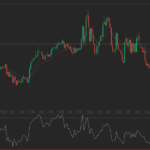West Texas Intermediate crude rose for a fourth consecutive day, the longest winning stretch since August, after TransCanada Corp. said that an extension of its Keystone XL pipeline will become operational on January 3, relieving a supply bottleneck at Cushing, Oklahoma. Prices were further supported by a much larger-than-expected decline in US crude inventories in the seven days through November 29, snapping 10 straight weeks of gains which added nearly 36 million barrels. Putting a lid on gains, Iraq and Iran signaled they will likely boost their crude output by 1 million barrels each, saying other OPEC members will have to make room for them. The cartels production target is expected to remain unchanged at their meeting today in Vienna.
On the New York Mercantile Exchange, WTI futures for settlement in January rose by $1.15% to $97.14 per barrel by 8:13 GMT. Prices surged to a five-week high of $97.39 during Asian trading, while days low stood at $96.09 a barrel. The U.S. benchmark rose by 3.2% on Tuesday, the most since September, and extended its weekly advance to over $4.7% following Wednesdays follow-through.
Meanwhile on the ICE, Brent crude for delivery in January was mostly unchanged on the day at $112.57 per barrel at 8:13 GMT, down 0.05%. Prices jumped to a days high of $113.01, the strongest level since September 9, while session low stood at $112.49 a barrel. The European benchmark added 1.3% on Tuesday, the most since November 21, and was up 2.2% on weekly basis by Wednesday.
West Texas Intermediate surged and narrowed its discount to the Brent benchmark after Calgary-based TransCanada Corp. said it will begin utilizing the southern segment of its Keystone XL pipeline on January 3. This will allow rising inventories at Cushing, Oklahoma, the biggest U.S. storage hub and delivery point for NYMEX-traded contracts, to move to Port Arthur, Texas. A large part of the countrys refining capacity is based on the Gulf Coast.
Gordon Kwan, the regional head of oil and gas research at Nomura Holdings Inc. in Hong Kong, said for Bloomberg: “Further de-bottlenecking at Cushing with the Keystone pipeline extension to Port Arthur could boost WTI and narrow the wide discount.”
U.S. inventories
Prices received further support after the industry-funded American Petroleum Institute reported yesterday a much larger-than-expected decline in U.S. crude stockpiles last week, snapping 10 straight weekly gains. Inventories lost 12.4 million barrels in the seven days through November 29, API said, while motor gasoline supplies dropped by 119 000 barrels. Distillate fuel stockpiles, which include heating oil and distillates, rose by 540 000 barrels.
APIs data however is considered as less reliable than EIAs statistics as it is based on voluntary information provided by operators of pipelines, bulk terminals and refineries, while the government requires reports to be filed with the EIA. According to the median estimate of 10 analysts surveyed by Bloomberg prior to the government numbers, crude inventories probably fell by 500 000 barrels last week, while motor gasoline supplies likely jumped by 1.3 million. Distillate fuel stockpiles are expected to have fallen by 1.5 million barrels.
OPEC output
Members of the Organization of the Petroleum Exporting Countries are due to hold a meeting in Vienna on Wednesday where the groups production target of 30 million bpd, which was set two years ago, is expected to remain unchanged.
Saudi Arabian Oil Minister Ali al-Naimi said, cited by CNBC: “The market is in the best situation it can be, demand is great, economic growth is improving. The market is in the best condition it can be.”
Iran and Iraq however commented earlier in the week they plan to expand their production by about 1 million barrels per day each, saying other members of the group should give way to make room for them.
Market players also awaited the release of crucial economic data from the U.S. later in the week to gauge demand prospects and further assess Fed’s tapering timetable. Due to be released on Wednesday are the U.S. new homes sales, ISM services sector report, trade balance and the ADP Employment Change, which will give preliminary information before Friday’s keenly awaited non-farm payrolls and unemployment rate.
On Thursday, the Commerce Department may revise the third quarter economic growth to 3.1%, up from initially estimated in October at 2.8%, while the Labor Department may report last week’s initial jobless claims rose at a moderate pace.





